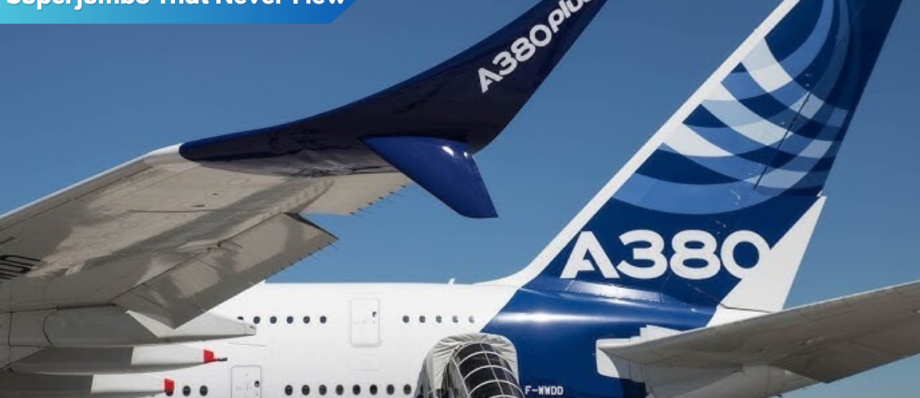The Airbus A380plus: The Superjumbo That Never Flew
The aviation industry is no stranger to ambitious projects, but few have captured the imagination quite like the Airbus A380plus. Promised as a more efficient and passenger-friendly version of the original A380, the A380plus was set to redefine long-haul air travel. However, despite the buzz and anticipation, this superjumbo variant never made it off the ground. Here’s a closer look at what could have been one of aviation’s most remarkable innovations.
Airbus A380plus: A Grounded Vision of Innovation

The Airbus A380, known for its enormous size and passenger capacity, was a revolutionary aircraft when it first took to the skies in 2005. However, as market trends evolved and airlines sought greater efficiency, Airbus aimed to enhance the superjumbo with the A380plus. First unveiled at the 2017 Paris Air Show, this design proposed significant advancements in aerodynamics and fuel efficiency. The A380plus promised an increased maximum takeoff weight, allowing for an additional 80 passengers or longer range, along with winglet additions that would reduce fuel burn by up to 4%.
Beyond fuel efficiency, the A380plus was poised to improve operational economics. Airbus highlighted modifications like optimized cabin layouts, enabling airlines to maximize revenue through better use of space. The plane’s innovative enhancements were set to include a redesigned staircase and new seating arrangements across all classes. Potentially, these changes could have provided airlines with a 13% cost reduction per seat compared to the base A380 model, making it an attractive proposition for long-haul operations.
Despite its promise, the A380plus never transitioned from concept to reality. Market conditions shifted towards smaller, more fuel-efficient twin-engine aircraft, such as the Airbus A350 and Boeing 787 Dreamliner. As airlines focused on profitability and environmental concerns, the business case for an updated superjumbo waned. Airbus faced an insurmountable challenge in securing enough orders to justify production, ultimately deciding to halt the A380 program entirely by 2021. The A380plus became a symbol of innovation thwarted by changing industry dynamics.
Inside the Dream That Never Took Flight

The concept behind the A380plus was not merely about increasing capacity but also redefining passenger experience. Airbus envisioned an aircraft where airlines could offer more premium features without sacrificing economy class capacity. The proposed enhancements included wider seats, more spacious cabins, and state-of-the-art in-flight entertainment options. These design proposals were in line with an industry shift towards increasing passenger comfort to enhance customer loyalty.
Airbus’ design team went beyond the cabin to improve the aircraft’s operational capabilities. By introducing new, lightweight materials and cutting-edge technology, the A380plus was set to revolutionize maintenance procedures and reduce turnaround times. This would have provided airlines with a more versatile aircraft capable of adapting to different market demands. The vision was to create an aircraft that not only served high-density routes but could also open new, previously unviable routes due to its advanced range capabilities.
Despite the strength of its vision, the A380plus faced significant hurdles. The aviation market was increasingly dominated by point-to-point travel, favoring smaller, direct flights over the hub-and-spoke model that the A380 was designed to support. Additionally, the economic pressures of the late 2010s, compounded by the COVID-19 pandemic, accelerated the decline in demand for large, four-engine aircraft. Ultimately, the A380plus was a casualty of a rapidly changing industry, where the focus shifted towards sustainability and cost-effectiveness over sheer capacity and luxury.
The Airbus A380plus remains a testament to aviation’s relentless pursuit of innovation. Though it never lifted off the ground, the concept signaled Airbus’ commitment to pushing the boundaries of what is possible in commercial aviation. While the industry may have moved on to favor more economical and environmentally-friendly aircraft, the A380plus will always be remembered as a dream that inspired designers and enthusiasts alike, showcasing the delicate balance between ambition and market demands in the aviation sector.



